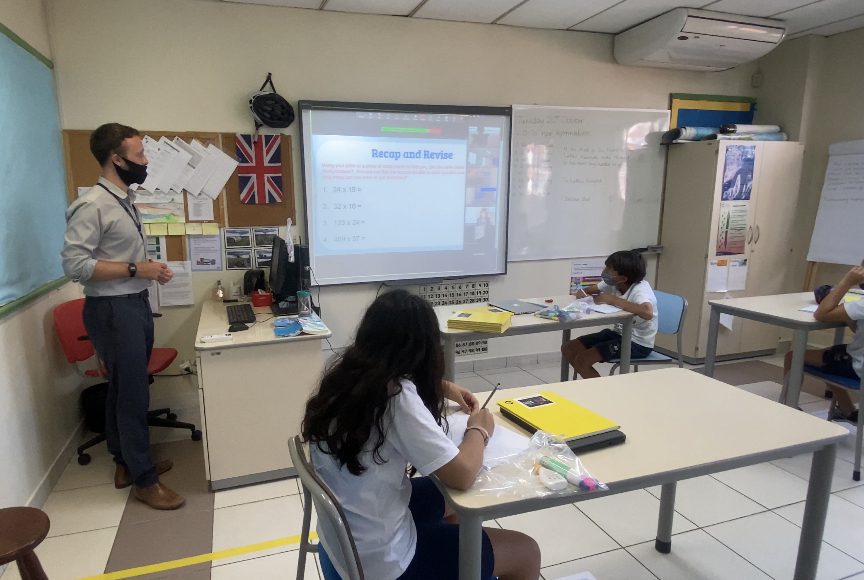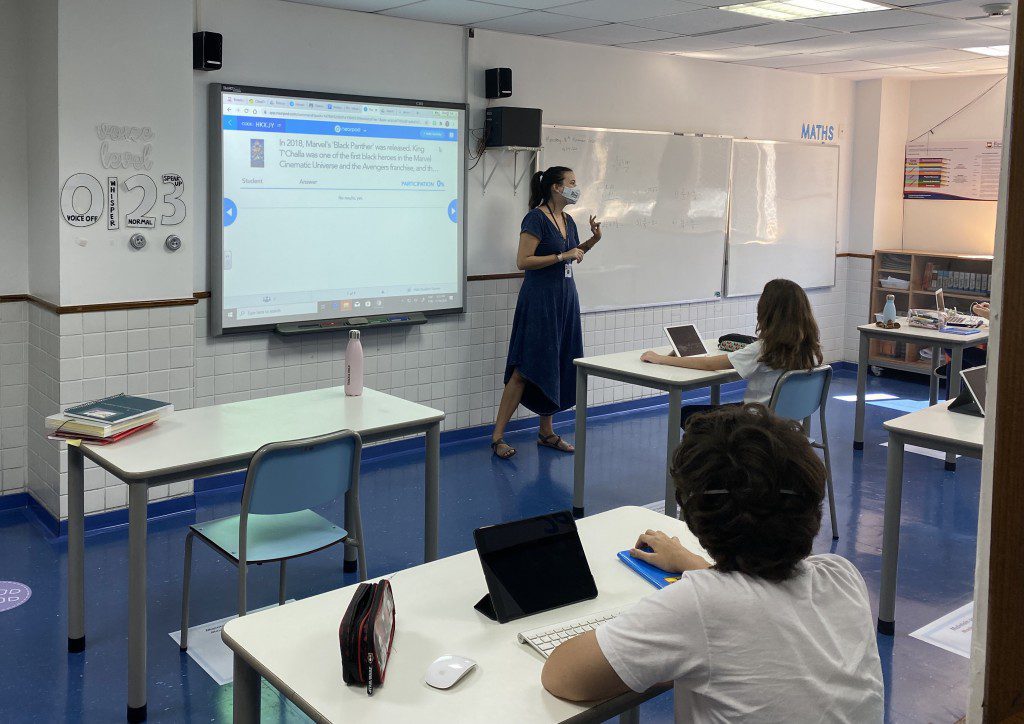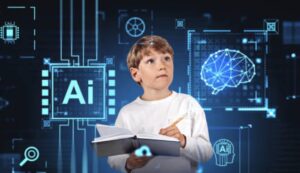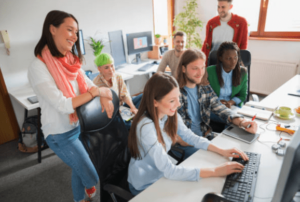As part of our transition from e-learning to face-to-face classes, our teachers have embraced an educational approach known as ‘blended learning’. This model combines the best of online educational platforms and online interaction (via Zoom, Google Meet or Hangouts, for example) with traditional, face-to-face teaching methods. In other words, the blended learning model entails some elements of online instruction with the physical presence of both teacher and students.
In the process of transitioning to a blended learning environment, our teachers have done an amazing job delivering face-to-face lessons for the children in school whilst simultaneously, live streaming these lessons for children at home. To make this possible, our teachers sign into Zoom or Google Meet, and the webcam then captures the introductory part of the lesson. The children based at home are then able to take part in these lessons before signing out, to work on and submit their assignments via the Google Classroom. The beauty of this model is that it enables all children, independent of distance, to take an active part in their learning. The two groups (A and B) can also see and talk with one another via the video link.
The power of our digital technologies used in school to both facilitate and further enhance students’ learning cannot be understated. For students at home, in addition to the live streamed lessons, this group is provided with tutorial videos and other forms of content to consume at their own pace whilst communicating with peers and teachers using the online learning tools, principally Google Classroom and Hangout. The ability for students to pause, rewind and fast-forward a tutorial video, for example, means that they are in a much better situation to assimilate new learning. For students in school, they have further opportunities to apply and extend what they have learnt with additional assistance from the teacher.
In order to make the lesson time itself more engaging while integrating formative assessment, our teaching teams use many of the latest web-based tools, including BrainPOP, Education City and, of course, the Google Apps for Education. The school’s Google suite of tools, in particular, as well as other platforms such as Flipgrid, Padlet and NearPod, have proven to be fantastic tools for students themselves to become authors, teachers and collaborators, working together to teach content to one other. As well as giving students opportunities to use these tools, teachers themselves regularly use these platforms as a medium in which to share information with students for them to learn at their own pace.
That being said, as educational professionals, it is important for us not to lose sight of the fact that we should focus on pedagogy first and technology second – or to put it another way, pedagogy always trumps technology! This is because, when integrating technology, it is less about the tools and more about what can be done with the tools handed to us.
I am proud to say that our blended learning approach has further facilitated an environment in which students are becoming more active creators instead of solely passive content recipients. After all, students learn best in an environment that they “own”, which adjusts rapidly to meet their learning needs and interests. As a team, we are continually learning how to effectively embed these learning technologies into our teaching practice. Indeed, as we gradually return to normality, we are looking forward to taking what we have learnt during these peculiar times, to further enhance our teaching practice and develop students’ learning.





